Why you should start a pottery journal
Have you ever found yourself lost in the world of pottery, surrounded by clay and creativity, yet unsure of how to capture those fleeting moments of inspiration? A pottery journal can be your best friend in this artistic journey. It’s more than just a notebook; it’s a treasure trove of your experiences, thoughts, and discoveries. Imagine flipping through the pages and reliving the excitement of your first successful glaze or the satisfaction of mastering a new technique. A pottery journal helps you enhance your creativity, track your progress, and deepen your understanding of the materials and techniques you use.
Keeping a pottery journal is like having a personal coach cheering you on. It provides a safe space to document not just your successes, but also your challenges and the lessons learned along the way. Think of it as a map of your artistic evolution, guiding you through the ups and downs of your pottery practice. Plus, it’s a fantastic way to reflect on your growth over time. You can look back at where you started and see just how far you’ve come, which can be incredibly motivating.
But what exactly should you include in your pottery journal? Well, that’s the beauty of it! You can make it as personal and creative as you want. From sketches of your latest designs to notes on the types of clay you used, the possibilities are endless. You might even want to include glaze recipes or techniques that worked well for you. This way, you can replicate your successful outcomes and continue to build on them. The act of writing things down not only reinforces your learning but also sparks new ideas and innovations.
In essence, a pottery journal is not just a record; it’s a reflection of your artistic soul. It allows you to explore your thoughts and feelings about your work, providing insights into why you create what you do. This emotional connection can significantly enhance your artistic expression. So, why not grab a notebook and start your pottery journal today? Your future self will thank you for it!
A pottery journal can significantly improve your skills by documenting your experiences, mistakes, and successes, ultimately leading to personal growth and artistic development in the craft of pottery. The benefits are numerous, and here are just a few:
- Increased Creativity: A journal encourages you to brainstorm and sketch new ideas.
- Progress Tracking: Visualize your growth and celebrate milestones.
- Technique Documentation: Keep track of successful techniques and recipes.
Q: How often should I write in my pottery journal?
A: There's no set rule! Write whenever you feel inspired, whether it's after a successful session or when you face a challenge. The key is consistency.
Q: What materials should I use for my pottery journal?
A: You can use any notebook you like! Some prefer sketchbooks for drawings, while others opt for lined journals for detailed notes. Choose what feels right for you.
Q: Can I include photos in my pottery journal?
A: Absolutely! Photos of your work can add a visual element to your journal and help you remember specific projects.

The Benefits of Keeping a Pottery Journal
This article explores the numerous benefits of maintaining a pottery journal, including enhancing creativity, tracking progress, and deepening your understanding of techniques and materials in pottery.
Keeping a pottery journal is like having a personal coach cheering you on every step of the way. It can significantly improve your skills by documenting your experiences, mistakes, and successes. Imagine having a treasure trove of insights that you can refer back to whenever you're in a creative slump or need a bit of motivation. By recording your journey, you not only track your artistic development but also cultivate a deeper relationship with your craft. Every entry becomes a stepping stone toward personal growth, allowing you to reflect on how far you've come.
One of the most exciting aspects of maintaining a pottery journal is the ability to visualize your growth. Over time, as you flip through the pages filled with sketches, notes, and photographs of your work, you'll start to see patterns emerge. You might notice how certain techniques have evolved or how your style has changed. This reflection is crucial because it not only highlights your progress but also provides a sense of accomplishment that can be incredibly motivating. Think of it as a map of your artistic journey, where every twist and turn tells a story.
Moreover, a pottery journal is a fantastic place to document your techniques and glaze recipes. Have you ever created a piece that turned out just right, only to forget what you did? With a journal, you can ensure that those successful outcomes are not just fleeting moments. Instead, you can replicate them whenever you want, while also feeling free to experiment with new ideas. It’s like being a mad scientist in your studio, with your journal as your lab notebook!
But let’s not forget about the lessons learned from mistakes. Mistakes are an essential part of the learning process, and they can be your best teachers if you let them. By documenting what went wrong in your pottery journal, you can analyze those moments critically and prevent yourself from repeating the same errors in future projects. It’s all about turning setbacks into stepping stones. When you look back at your journal, you’ll see how those missteps shaped your skills and knowledge, ultimately making you a more proficient potter.
And of course, every success deserves recognition. By noting your achievements in your pottery journal, you create a source of motivation and inspiration that encourages you to continue exploring your craft. Whether it’s a perfect glaze application, a well-executed form, or simply completing a challenging project, celebrating these wins can boost your confidence. Remember, each little victory is a building block in your artistic journey!
In summary, the benefits of keeping a pottery journal are vast and impactful. From tracking your progress and documenting techniques to learning from mistakes and celebrating successes, your journal can be a powerful tool in your pottery practice. So why not grab a notebook and start chronicling your creative adventures? You might just discover a newfound passion for your craft that you never knew existed!
- What should I include in my pottery journal?
Your pottery journal can include sketches, notes on techniques, glaze recipes, reflections on your projects, and even photographs of your finished pieces.
- How often should I write in my pottery journal?
There's no set rule! Write whenever you feel inspired or after completing a project. Regular entries can help you track your progress more effectively.
- Can I use a digital format for my pottery journal?
Absolutely! Whether you prefer a physical notebook or a digital format, the important thing is to find a method that works for you.

Tracking Your Progress
When it comes to pottery, tracking your progress is like keeping a treasure map of your artistic journey. Each project you undertake is a stepping stone that leads you closer to mastery. By regularly documenting your pottery projects in your journal, you create a visual timeline that showcases your growth and evolution as an artist. It’s not just about the final pieces; it’s about the process, the learning, and the joy that comes with each creation.
Imagine flipping through the pages of your journal and seeing how far you've come. You might start with simple bowls and mugs, and as you turn the pages, you find intricate vases and unique sculptures. This visual representation of your progress serves as a powerful reminder of your dedication and hard work. It’s like looking back at old photos; you can see the changes not just in your skills but also in your style and approach to pottery.
To make the most out of your pottery journal, consider including the following elements:
- Project Details: Write down the specifics of each project, including the type of clay used, the techniques applied, and any challenges faced during the creation process.
- Photos: Attach pictures of your work at different stages. This visual documentation can be incredibly motivating and provide insight into your artistic evolution.
- Reflections: After completing a piece, take a moment to reflect on what you learned. What went well? What could be improved? This self-analysis is crucial for growth.
Tracking your pottery projects not only helps you visualize your growth but also allows you to celebrate the milestones you've achieved along the way. Every small victory, whether it's mastering a new technique or successfully glazing a piece, deserves recognition. By noting these successes in your journal, you create a source of motivation that encourages you to keep pushing the boundaries of your creativity.
Moreover, this practice can also foster a deeper connection with your work. When you look back at your earlier projects, you might remember the excitement of trying something new or the frustration of a piece not turning out as planned. These memories enrich your artistic journey, making it more meaningful and personal. Your pottery journal becomes a sacred space where your artistic soul can flourish, filled with not just notes and sketches but with stories and emotions.
In essence, tracking your progress in pottery is akin to planting seeds in a garden. With time, care, and reflection, those seeds grow into beautiful flowers, each representing a unique aspect of your artistry. So grab your journal, start documenting, and watch as your skills blossom before your eyes!
Q: How often should I update my pottery journal?
A: Ideally, you should update your journal after completing each project or whenever you have a new idea or technique to note. Regular entries help maintain a clear picture of your progress.
Q: Can I include sketches in my journal?
A: Absolutely! Sketching your ideas is a great way to visualize your concepts before you start working on them. It also adds a personal touch to your journal.
Q: What if I make mistakes in my journal?
A: Mistakes are part of the learning process. Embrace them! Documenting your errors can provide valuable lessons for future projects.
Q: Is it necessary to include photos in my journal?
A: While it's not mandatory, including photos can enhance your journal significantly. They provide a visual reference for your progress and can be very inspiring.
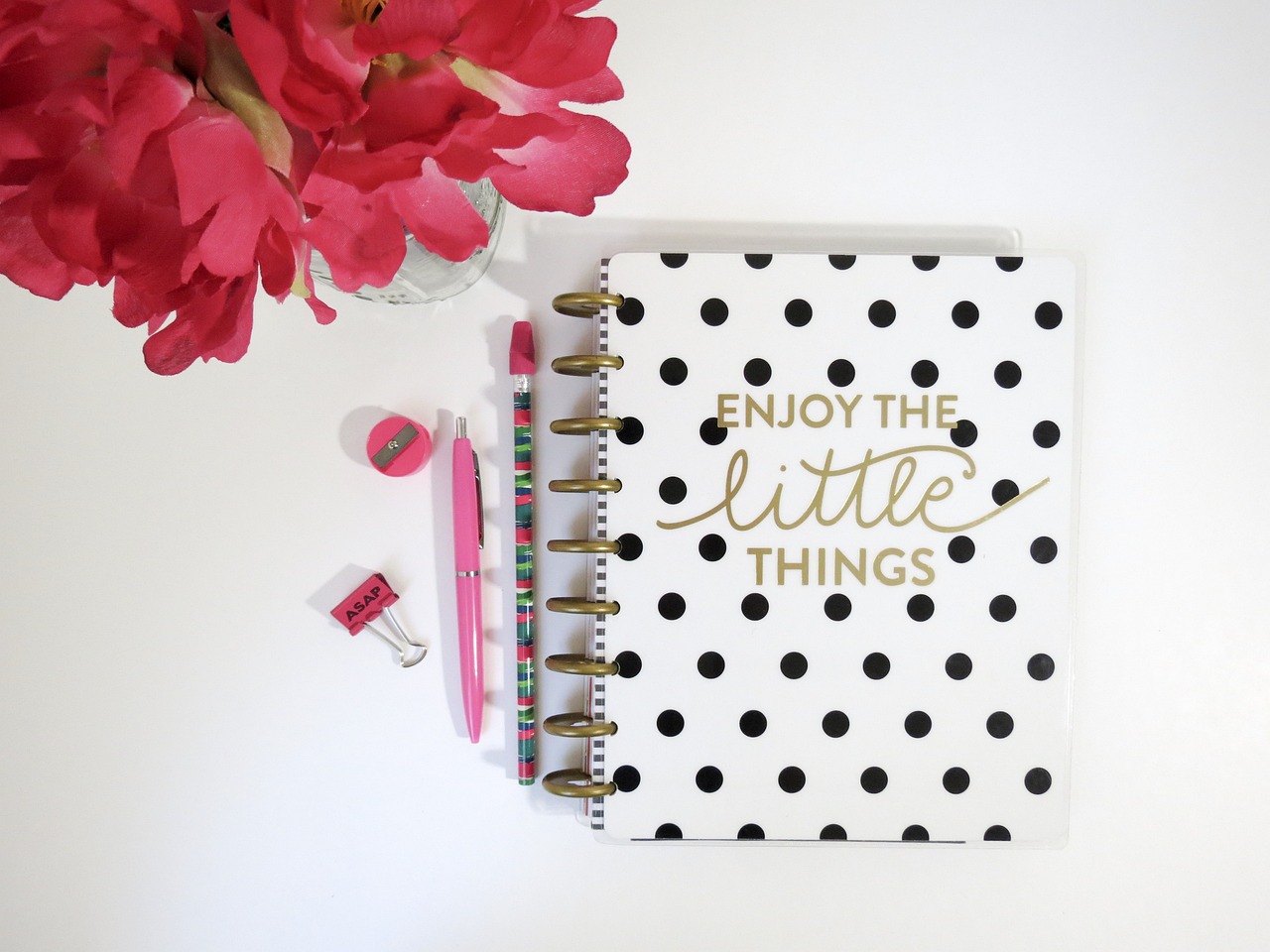
Documenting Techniques and Recipes
When it comes to pottery, the beauty lies not just in the finished piece but in the journey of creation. Documenting your techniques and recipes in a pottery journal is like keeping a treasure map of your artistic adventures. Imagine being able to look back at your past creations and recall the exact steps that led to your success—or even your failures. This practice not only helps in replicating successful outcomes but also encourages you to experiment with new ideas.
Every potter has their own unique style, and the techniques you develop over time are what set you apart. By writing down the specific methods you use, such as hand-building, wheel-throwing, or glazing techniques, you create a personalized reference guide. For instance, if you discover a particular glaze that produces a stunning effect, documenting the exact mixture and application process ensures you can recreate that magic in future projects.
Furthermore, a pottery journal allows you to keep track of various recipes for glazes and clays. You might want to experiment with different combinations to achieve unique finishes. Here’s a simple example of how you might structure your glaze recipes in your journal:
| Glaze Name | Ingredients | Firing Temperature | Notes |
|---|---|---|---|
| Celadon Green | Feldspar, Kaolin, Silica, Iron Oxide | Cone 6 | Great for stoneware, produces a glossy finish. |
| Ocean Blue | Soda Ash, Ball Clay, Cobalt Carbonate | Cone 10 | Creates a vibrant blue with speckled effects. |
In addition to recipes, consider documenting your thoughts on the techniques you try. Did a certain method yield unexpected results? Were there challenges you faced while trying to achieve a specific effect? By reflecting on these experiences, you not only enhance your skills but also cultivate a deeper understanding of the materials and processes involved in pottery.
In essence, your pottery journal becomes a dynamic resource that evolves as you grow. It’s a place where your creativity can flow freely, and your ideas and innovations can take shape. So, grab that journal and start jotting down those techniques and recipes—you never know when a simple note might spark your next masterpiece!
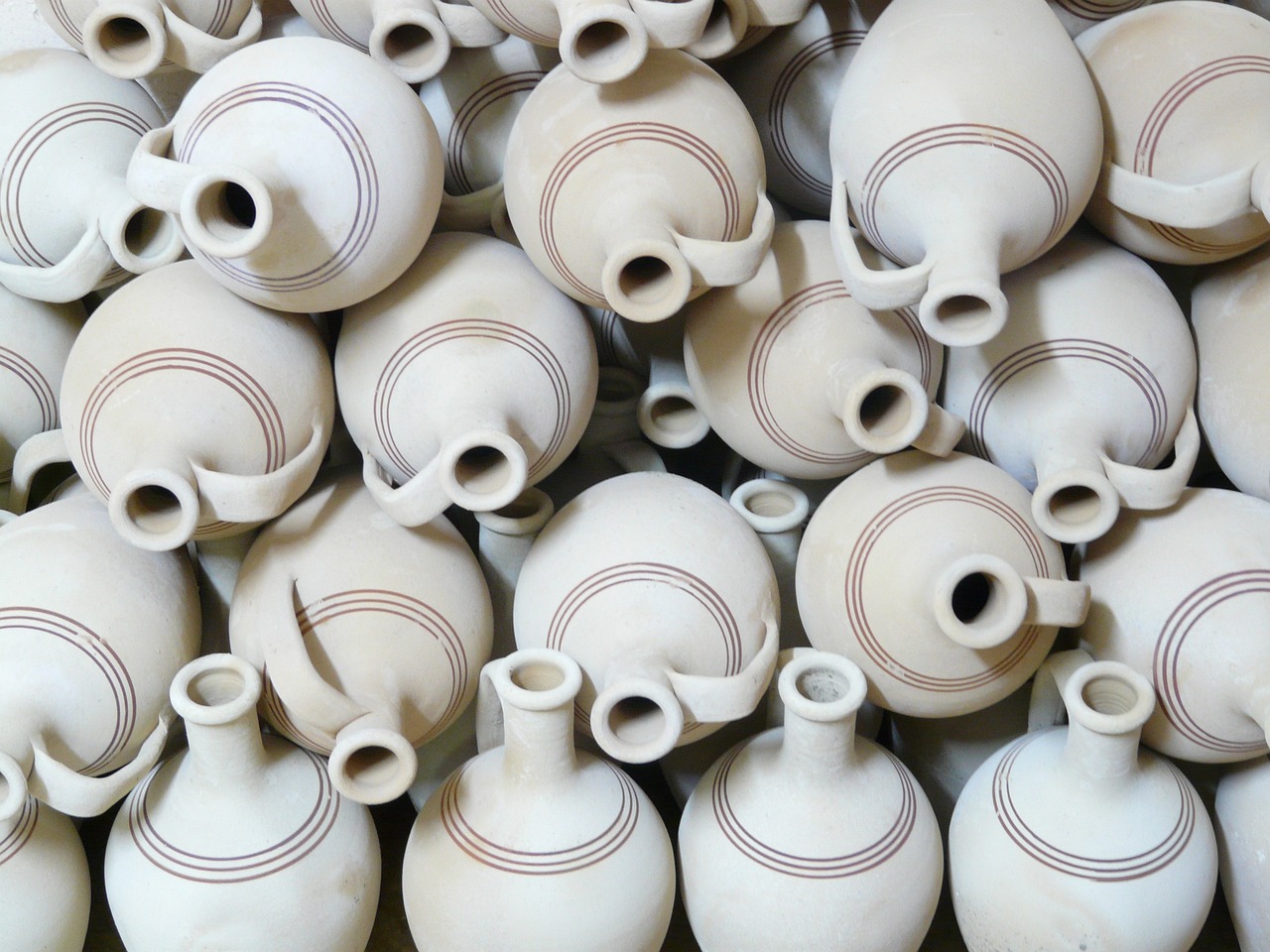
Learning from Mistakes
Every potter knows that the journey of crafting beautiful pieces isn't always smooth sailing. In fact, mistakes are often the stepping stones to mastering your craft. When you keep a pottery journal, you create a safe space to document not just your triumphs but also those less-than-perfect moments. Think of your journal as a personal coach—one that helps you analyze what went wrong and how you can improve. By reflecting on these experiences, you can turn those little mishaps into valuable lessons.
For instance, imagine you tried a new glaze that turned out completely different than you expected. Instead of feeling defeated, you can jot down the specifics of the application process, the firing temperature, and any other variables. This way, you can revisit your notes later and pinpoint what led to the unexpected result. You might discover that a simple adjustment, like changing the firing time or altering the glaze mixture, could yield the outcome you desire next time. is all about being curious and open-minded.
Moreover, documenting your errors doesn't just help you; it can also serve as a guide for others who may face similar challenges. Sharing your experiences—like how a particular clay body shrank more than you anticipated—can foster a sense of community among fellow potters. They might have faced the same issue and could offer insights or solutions that you hadn't considered. In this way, your pottery journal becomes a treasure trove of knowledge, not just for you but for those around you.
Here’s a little tip: when you write about your mistakes, try to include the following elements in your journal:
- The specific mistake you made
- What you were trying to achieve
- What went wrong and why you think it happened
- What you learned from the experience
- How you plan to avoid this mistake in the future
By incorporating these elements, you create a comprehensive roadmap of your learning journey. Each entry becomes a valuable resource that you can refer back to as you continue to grow as a potter. So, the next time you face a setback, remember: it’s not just a mistake—it’s an opportunity to learn and evolve.
Q1: What should I include in my pottery journal?
A1: You can include your project ideas, sketches, techniques, glaze recipes, mistakes, and personal reflections. The more detailed, the better!
Q2: How often should I write in my pottery journal?
A2: Aim to write in your journal after each pottery session. This will help you keep track of your progress and insights.
Q3: Can I use a digital format for my pottery journal?
A3: Absolutely! Whether you choose a physical notebook or a digital app, the important thing is to maintain consistency and document your journey.
Q4: How can sharing my pottery journal help others?
A4: Sharing your experiences can provide valuable insights to fellow potters, helping them avoid similar mistakes and encouraging a sense of community.
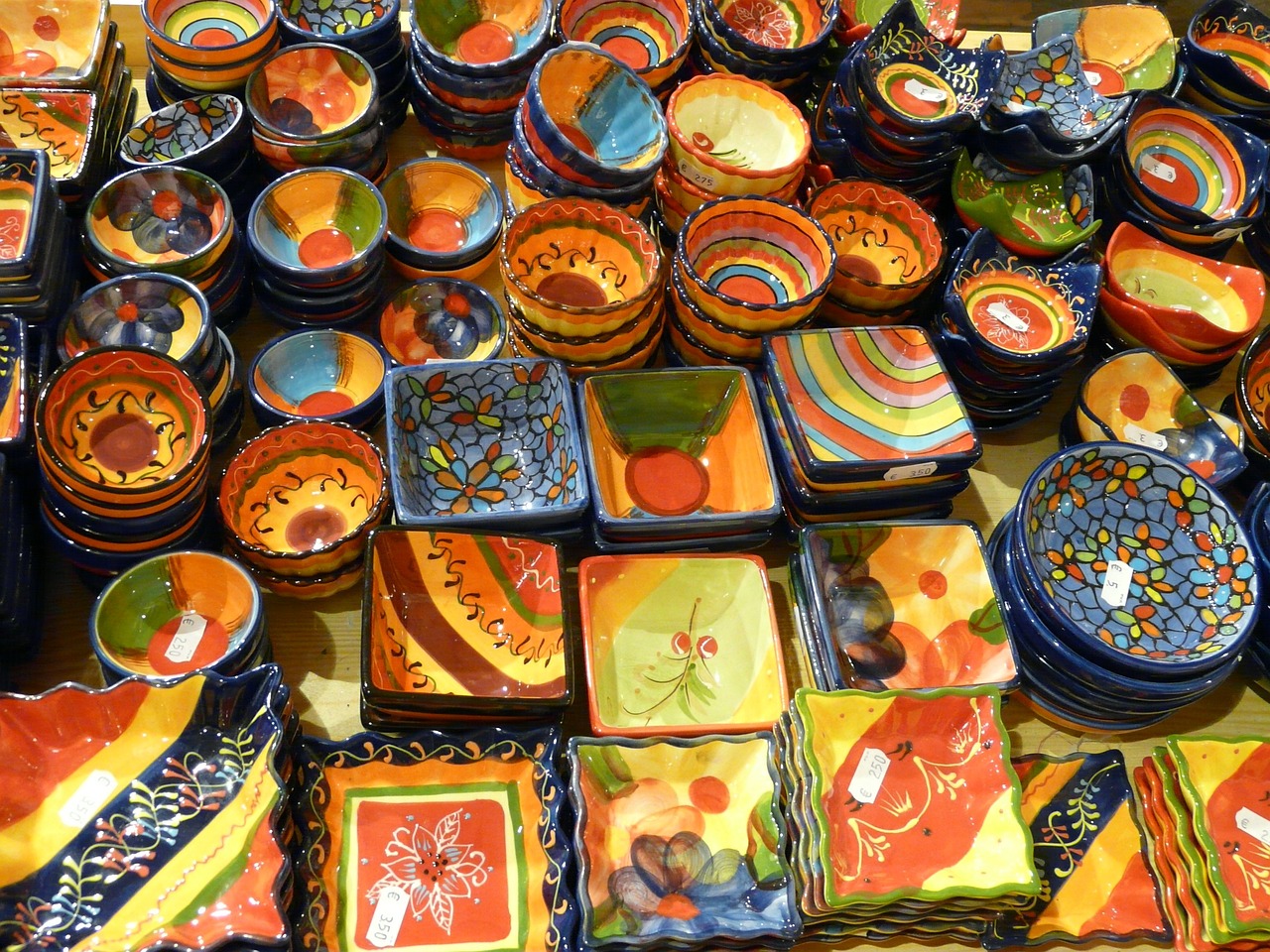
Celebrating Successes
Every potter knows that in the world of clay, success can sometimes feel like a rare gem hidden beneath layers of challenges and trials. That's why celebrating your successes in a pottery journal is not just a nice-to-have; it's a vital practice that can boost your motivation and inspire you to reach new heights in your craft. When you take the time to document your achievements, no matter how small, you create a tangible record of your artistic journey that you can look back on and cherish.
Think about it: when you finish a piece that you’re particularly proud of, how often do you take a moment to reflect on what made that creation special? Was it the new technique you tried? The glaze that turned out just right? Or perhaps it was the way the piece resonated with your personal style? By jotting down these thoughts in your pottery journal, you’re not just celebrating the end product; you’re also acknowledging the *process* that got you there. This reflection can serve as a powerful reminder of your growth and the skills you’ve honed over time.
Moreover, documenting your successes can help you identify patterns and preferences in your work. For example, you might notice that certain color combinations or forms consistently yield positive results. By keeping track of these details, you can start to cultivate your unique artistic voice. Here’s how you can structure your celebration entries:
| Date | Project Name | What Worked Well | Future Improvements |
|---|---|---|---|
| 2023-10-01 | Vase for Mom | Perfect glaze application | Experiment with texture |
| 2023-10-10 | Serving Bowl | Great shape and size | Try a different clay body |
By using a simple table like this, you can easily track your progress and reflect on what made each project successful. And don't forget to celebrate those big wins! Maybe you completed your first major project or finally mastered that tricky throwing technique. These milestones deserve a shout-out in your journal. You could even consider rewarding yourself with a small treat or a new tool for your studio—because who doesn’t love a little extra motivation?
In essence, celebrating your successes in your pottery journal is about more than just recording achievements; it’s about creating a positive feedback loop that encourages you to keep pushing your boundaries. Each entry is a reminder that every pot you create, every technique you master, and every challenge you overcome is a step toward becoming the potter you aspire to be. So go ahead, grab that journal, and start celebrating your artistic victories!
- Why should I keep a pottery journal? A pottery journal helps you track your progress, document techniques, and celebrate your successes, enhancing your overall pottery experience.
- What should I include in my pottery journal? You can include project details, techniques used, successes, mistakes, and personal reflections on each piece you create.
- How often should I update my pottery journal? It's best to update your journal after each project or whenever you learn something new to keep your records fresh and insightful.
- Can I use my pottery journal for sketches? Absolutely! Use your journal as a creative space for brainstorming and sketching new ideas.
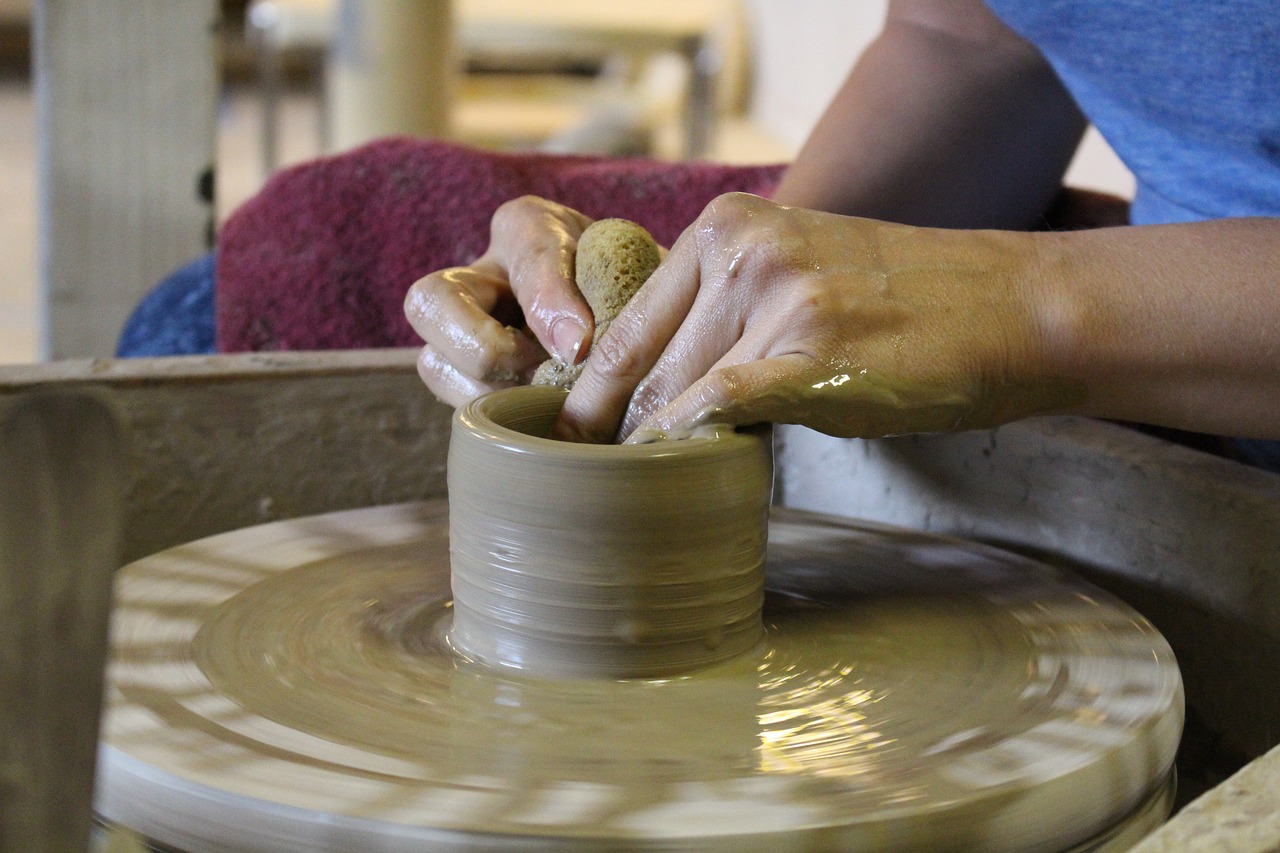
Enhancing Creativity
When it comes to pottery, creativity is the lifeblood that fuels your artistic expression. A pottery journal acts as a creative playground, where you can unleash your imagination without any constraints. Think of it as a blank canvas where every thought, idea, and sketch can come to life. The beauty of maintaining a pottery journal is that it encourages you to brainstorm ideas freely, explore new designs, and even experiment with various forms and techniques.
Imagine sitting at your potter's wheel, and instead of just focusing on the final product, you take a moment to jot down your thoughts or sketch out a new design. This practice not only helps in organizing your ideas but also serves as a catalyst for innovation. You might find that a simple doodle can spark an entirely new project, or a fleeting thought can evolve into a stunning piece of pottery.
Moreover, your pottery journal can become a repository of inspiration. You can include images, quotes, and even snippets of conversations that resonate with your artistic journey. By revisiting these entries, you can reignite that initial spark of creativity whenever you feel stuck. It’s like having a personal muse that you can turn to at any time!
In addition to documenting your creative process, your journal can also serve as a space for reflection and exploration. You might want to ask yourself questions like:
- What materials inspire me the most?
- How do different techniques affect my creative flow?
- What themes or messages do I want to convey through my pottery?
Furthermore, the act of writing down your thoughts can be incredibly therapeutic. It allows you to process your experiences and emotions related to your craft, which can ultimately enhance your creative output. Just like a musician might write lyrics to express their feelings, you can use your pottery journal to articulate your artistic vision and the emotions that drive your work.
In conclusion, a pottery journal is not just a tool for tracking your progress; it’s a vital component of your creative journey. By embracing this practice, you open the door to endless possibilities, allowing your creativity to flourish in ways you might never have imagined. So grab that journal, let your ideas flow, and watch as your pottery practice transforms into a vibrant tapestry of creativity.
Q: What should I include in my pottery journal?
A: You can include sketches, ideas, glaze recipes, reflections on your projects, and even photographs of your finished works. The key is to make it personal and meaningful to you.
Q: How often should I write in my pottery journal?
A: It's beneficial to write in your journal regularly, whether after each session or whenever inspiration strikes. The more you document, the richer your journal will become.
Q: Can a pottery journal help me improve my skills?
A: Absolutely! Documenting your experiences, successes, and mistakes allows you to learn from them and track your progress over time, ultimately leading to improvement.

Incorporating Personal Reflections
When it comes to pottery, the journey is as significant as the destination. into your pottery journal is a powerful way to deepen your connection with your work. Think of your journal as a conversation with yourself; it’s a space where you can express your thoughts, feelings, and insights about your creative process. This practice not only enhances your understanding of your craft but also allows you to explore the emotional landscape that influences your art.
By writing about your experiences, you can uncover patterns in your creativity. For instance, you might notice that certain materials inspire you more than others, or that specific techniques resonate with your artistic voice. This reflective practice can lead to profound discoveries about what drives you as a potter. Are you drawn to the tactile nature of clay, or is it the meditative process of shaping and molding that captivates you? By documenting these insights, you can align your future projects with your passions, making your work even more fulfilling.
Moreover, personal reflections can serve as a source of motivation. When you look back at your journal entries, you can see how far you’ve come, both in terms of technical skill and personal growth. It’s like flipping through a photo album of your artistic evolution. You might find entries where you expressed doubt about your abilities, only to later achieve something remarkable. This can ignite a spark of inspiration, reminding you that every artist faces challenges, but perseverance leads to success.
Additionally, consider including emotional reflections alongside your technical notes. For example, after completing a piece, ask yourself questions like:
- What emotions did I feel while creating this?
- What story does this piece tell?
- How does this work reflect my personal journey?
These questions not only deepen your understanding of your art but also encourage a more profound connection with your audience. When you share your work, you’re not just presenting a physical object; you’re sharing a piece of your soul. This connection can resonate with others, fostering a sense of community among fellow pottery enthusiasts.
In summary, incorporating personal reflections into your pottery journal enriches your creative journey. It allows you to explore the emotional depths of your work, celebrate your progress, and connect with others who share your passion. So, grab that journal, and start writing! Your artistic voice is waiting to be heard.
Q: How often should I write in my pottery journal?
A: There’s no set rule! Write whenever you feel inspired or after completing a project. Regular entries can help you track your growth.
Q: Can I include sketches in my journal?
A: Absolutely! Sketching designs or ideas can enhance your creative process and serve as a visual reference for future projects.
Q: What if I make mistakes in my journal?
A: Mistakes are part of the learning process. Embrace them! Documenting your errors can help you learn and grow as an artist.
Q: Should I share my journal with others?
A: Sharing your journal can foster community and connection. It allows others to see your journey and can inspire fellow potters.

Setting Goals for Growth
Setting goals is like planting seeds in your pottery journey; it’s about nurturing your aspirations and watching them blossom into tangible skills and creations. When you take the time to outline what you want to achieve in your pottery practice, you create a roadmap that guides you through the intricate landscape of clay and creativity. Think about it: without a destination in mind, how can you expect to navigate the winding paths of artistic development? Goals provide direction, motivation, and a sense of purpose, making your pottery experience not just a hobby, but a fulfilling journey.
To effectively set goals, consider using the SMART criteria—Specific, Measurable, Achievable, Relevant, and Time-bound. This framework helps you craft clear and actionable objectives that can significantly enhance your growth as a potter. For example, instead of saying, “I want to get better at pottery,” you might set a goal like, “I will master throwing on the wheel by practicing three times a week for the next month.” This approach not only clarifies your intent but also allows you to track your progress over time.
In your pottery journal, make a dedicated section for your goals. You might even create a simple table to outline your objectives, the steps needed to achieve them, and your target completion dates. Here’s a quick example:
| Goal | Steps to Achieve | Target Date |
|---|---|---|
| Improve glazing techniques | Research glaze recipes, experiment with application methods | End of next month |
| Complete a series of mugs | Plan designs, throw, trim, and glaze | Two months from now |
As you work toward your goals, remember to celebrate the small wins along the way. Each milestone you reach is a testament to your hard work and dedication. Document these achievements in your journal, and don’t hesitate to reflect on what you’ve learned during the process. This reflection will not only reinforce your progress but also serve as a source of inspiration for future projects.
Moreover, sharing your goals with fellow pottery enthusiasts can create a sense of accountability and foster a supportive community. Engaging with others who share your passion can provide fresh perspectives and encouragement, making the journey even more enjoyable. Whether it's through social media, pottery classes, or local workshops, connecting with others can spark new ideas and motivate you to push your creative boundaries.
In conclusion, setting goals for growth in your pottery practice is not just about improving your skills; it’s about cultivating a deeper connection with your art. By being intentional in your approach, you can transform your pottery journey into a rewarding and enriching experience. So grab your journal, jot down those aspirations, and let the clay lead you on an incredible adventure!
- How often should I update my pottery journal? It's beneficial to update your journal after each session to capture your thoughts and progress.
- What should I include in my pottery journal? Include techniques, recipes, reflections, goals, and any mistakes you want to learn from.
- Can a pottery journal help me with creativity? Absolutely! It serves as a space for brainstorming and exploring new ideas.
- Is it necessary to share my pottery journal with others? While it's not necessary, sharing can foster community and provide valuable feedback.
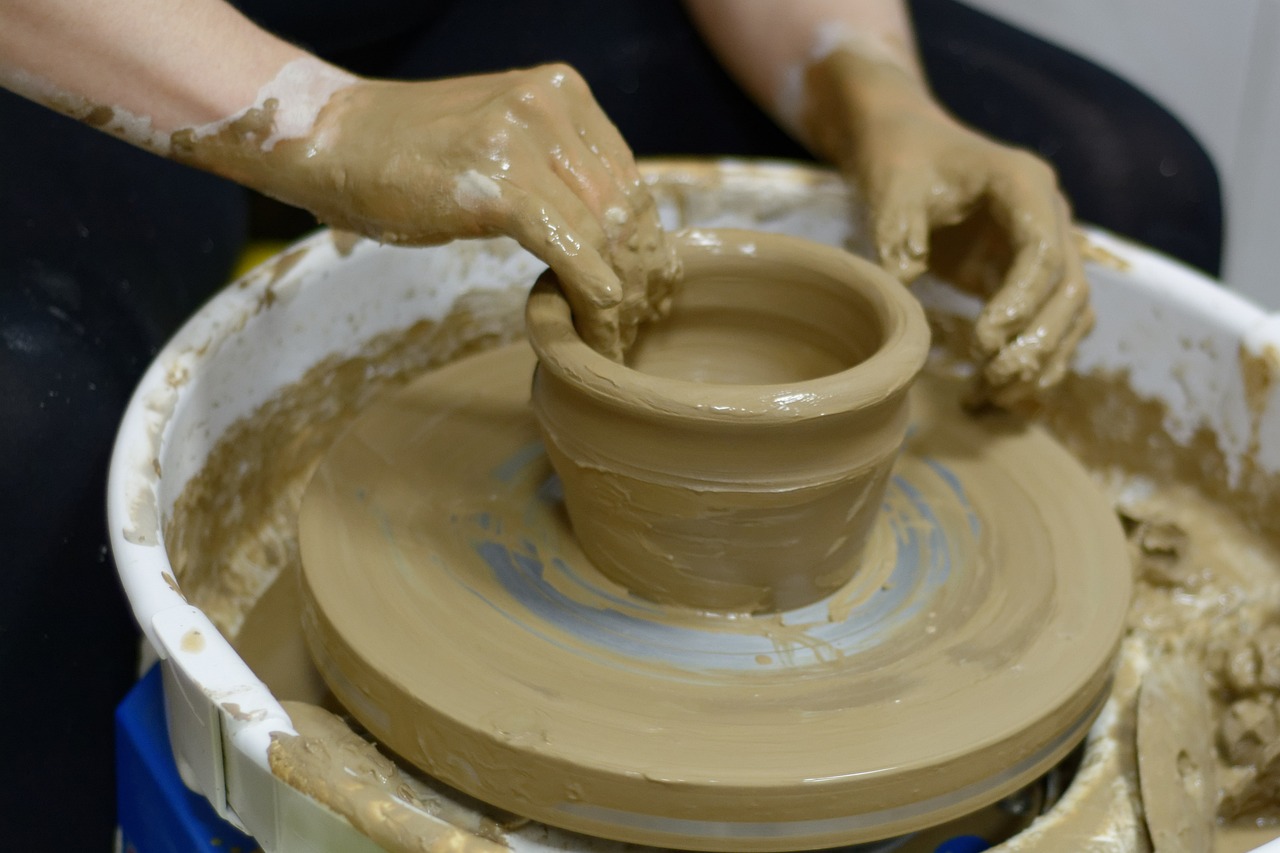
Sharing Your Journey
Sharing your pottery journey can be one of the most rewarding aspects of maintaining a pottery journal. It’s not just about documenting your own progress; it’s about connecting with others who share your passion. When you open up your journal to the world, you create a space for dialogue, inspiration, and community. Imagine flipping through your pages filled with sketches, notes, and reflections, and then inviting others to experience that journey alongside you. How exciting is that?
By sharing your experiences, you can inspire fellow potters to embark on their own creative paths. You might be surprised at how many people resonate with your struggles and triumphs. Whether you choose to share your journal in a local pottery class, on social media, or through a blog, the feedback and encouragement you receive can be incredibly uplifting. Plus, you never know when your story might spark a new idea or technique for someone else.
Consider creating a dedicated space in your pottery journal for sharing insights and reflections that are particularly meaningful. You might include:
- Project Highlights: Describe a project that challenged you and what you learned from it.
- Techniques That Worked: Share a technique that yielded great results, along with tips for others to try it.
- Personal Reflections: Write about how pottery has impacted your life and what it means to you.
Moreover, sharing your pottery journey can also lead to collaborative projects, workshops, or even exhibitions. When you connect with others, you open doors to new opportunities that can deepen your practice and broaden your perspective. Imagine hosting a pottery night where everyone brings their journals to share their experiences and creations. It’s a wonderful way to learn from each other and foster a sense of belonging in the pottery community.
Ultimately, sharing your journey is about building relationships and creating a supportive network. The pottery world can sometimes feel isolating, especially when you’re deep in the trenches of your own creative process. But by reaching out and sharing your story, you’ll find that you’re not alone. You’re part of a vibrant community of artists and makers, all navigating their unique paths in the world of pottery.
Q: How can I start sharing my pottery journal with others?
A: You can start by sharing snippets of your journal on social media platforms like Instagram or Facebook, or consider starting a blog dedicated to your pottery journey.
Q: Is it necessary to share every detail of my pottery process?
A: Not at all! Share what feels comfortable for you. Focus on the projects and experiences that resonate most.
Q: Can I share my pottery journal with people outside of the pottery community?
A: Absolutely! Sharing your journey can inspire individuals from all walks of life, showcasing the beauty and creativity of pottery.
Q: What if I feel my work isn't good enough to share?
A: Remember, everyone starts somewhere. Sharing your journey, including your struggles, can be just as valuable and relatable as showcasing your successes.
Frequently Asked Questions
- What is a pottery journal?
A pottery journal is a personal record where you document your pottery experiences, including techniques, projects, mistakes, and successes. It's a space for creativity and reflection that helps you grow as a potter.
- How can a pottery journal enhance my creativity?
By allowing you to brainstorm ideas, sketch designs, and jot down inspirations, a pottery journal acts as a creative outlet. It encourages you to experiment with new forms and techniques, ultimately leading to more innovative work.
- Why is tracking progress important in pottery?
Tracking your progress helps you visualize your growth over time. It allows you to reflect on your artistic journey, celebrate milestones, and recognize how far you’ve come in your pottery skills.
- Can I learn from my mistakes in pottery?
Absolutely! Documenting your mistakes in your pottery journal helps you analyze what went wrong. This reflection is key to preventing the same errors in future projects and improving your overall skills.
- How do I document techniques and recipes?
You can write down specific techniques, glaze recipes, and any modifications you make in your journal. This ensures that you can replicate successful outcomes and explore new ideas in your pottery practice.
- What kind of personal reflections should I include?
Include your thoughts on your artistic choices, emotional connections to your work, and insights gained throughout your pottery journey. This adds depth to your journal and enhances your understanding of your craft.
- How can I set goals in my pottery journal?
Establish clear, achievable goals in your journal to focus your efforts. This helps you measure progress and keeps you motivated as you work towards becoming a more skilled potter.
- Can I share my pottery journal with others?
Yes! Sharing your journey through your pottery journal can foster a sense of community among fellow pottery enthusiasts. It’s a great way to connect, inspire, and learn from each other.


















